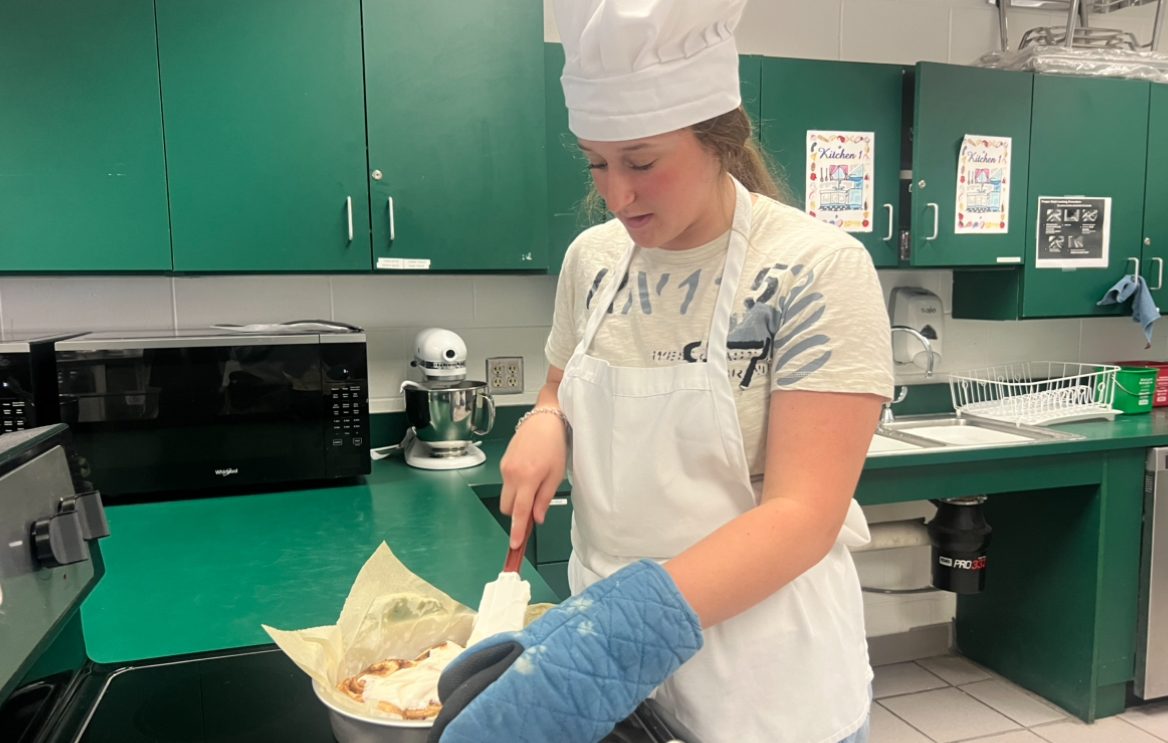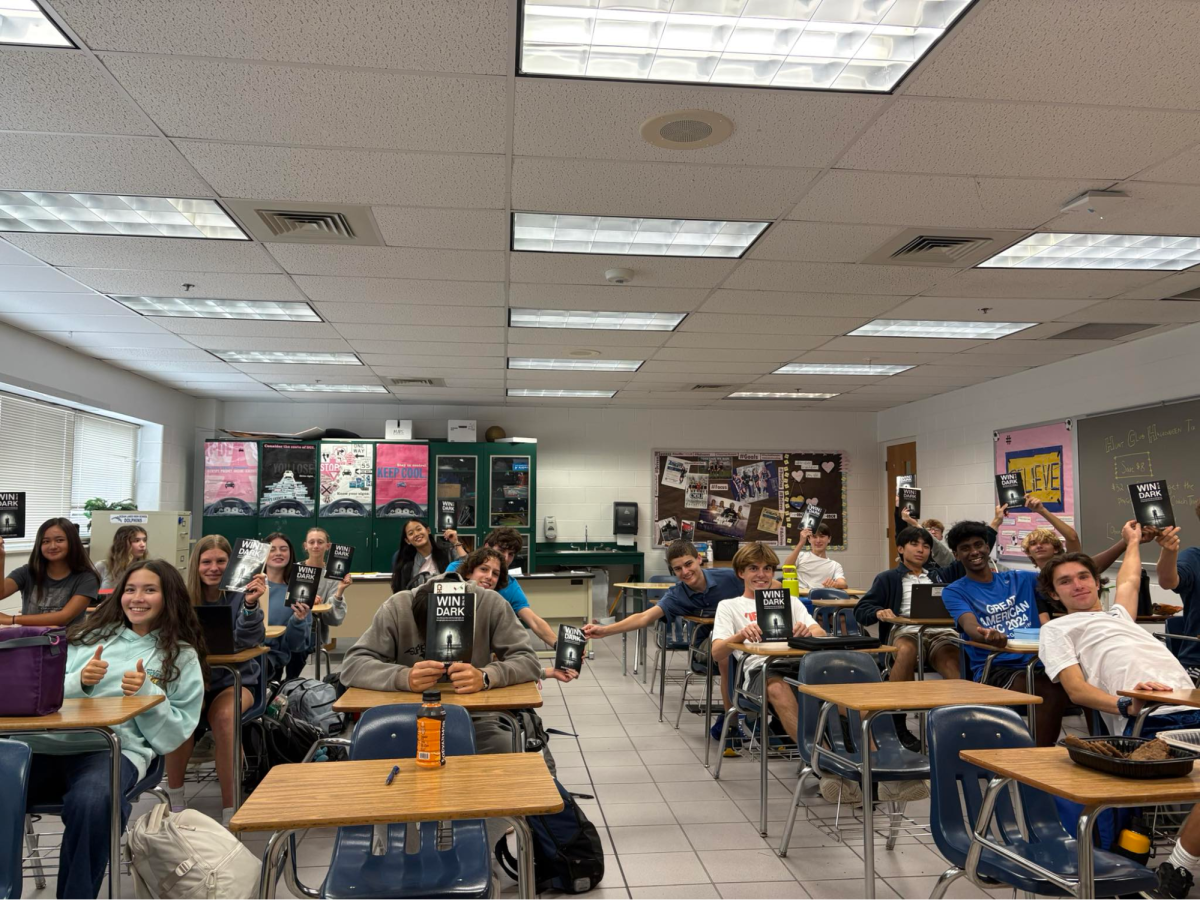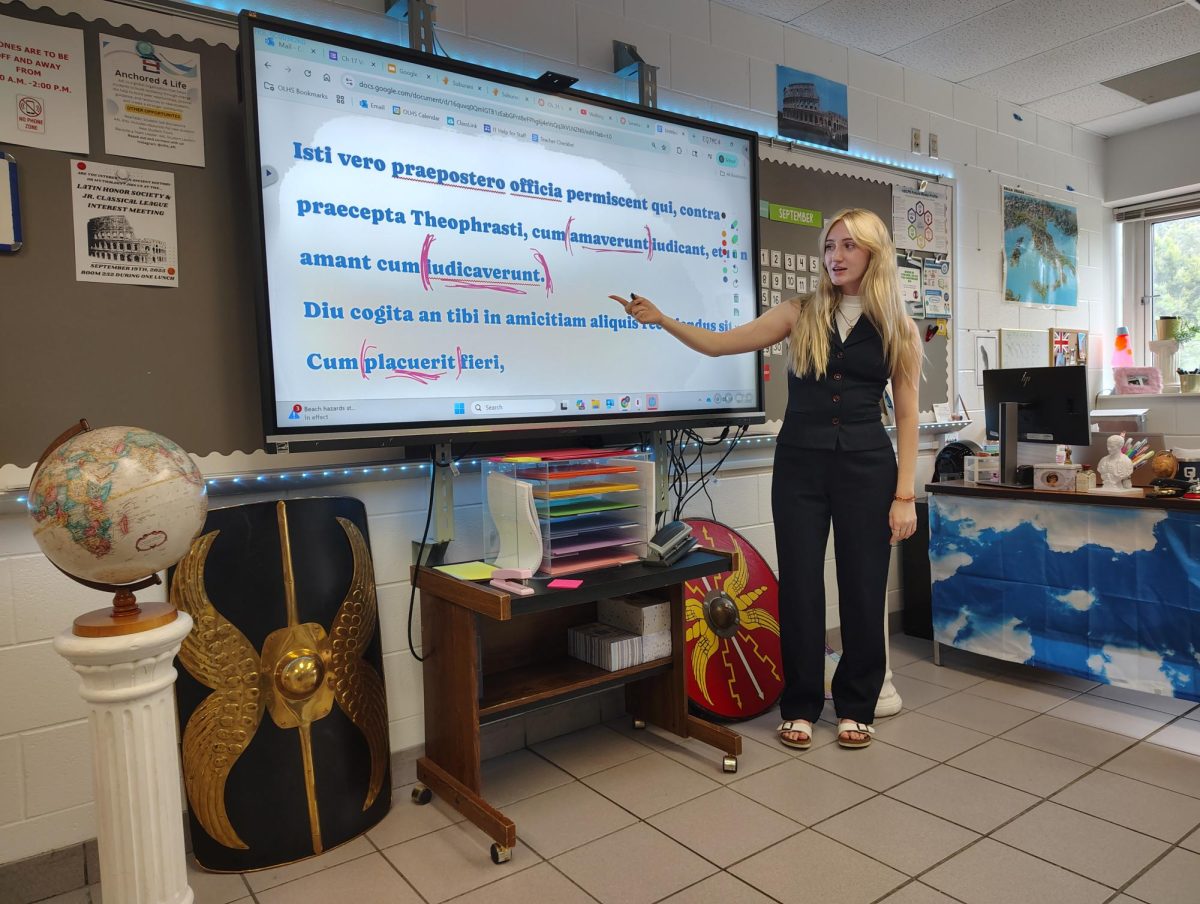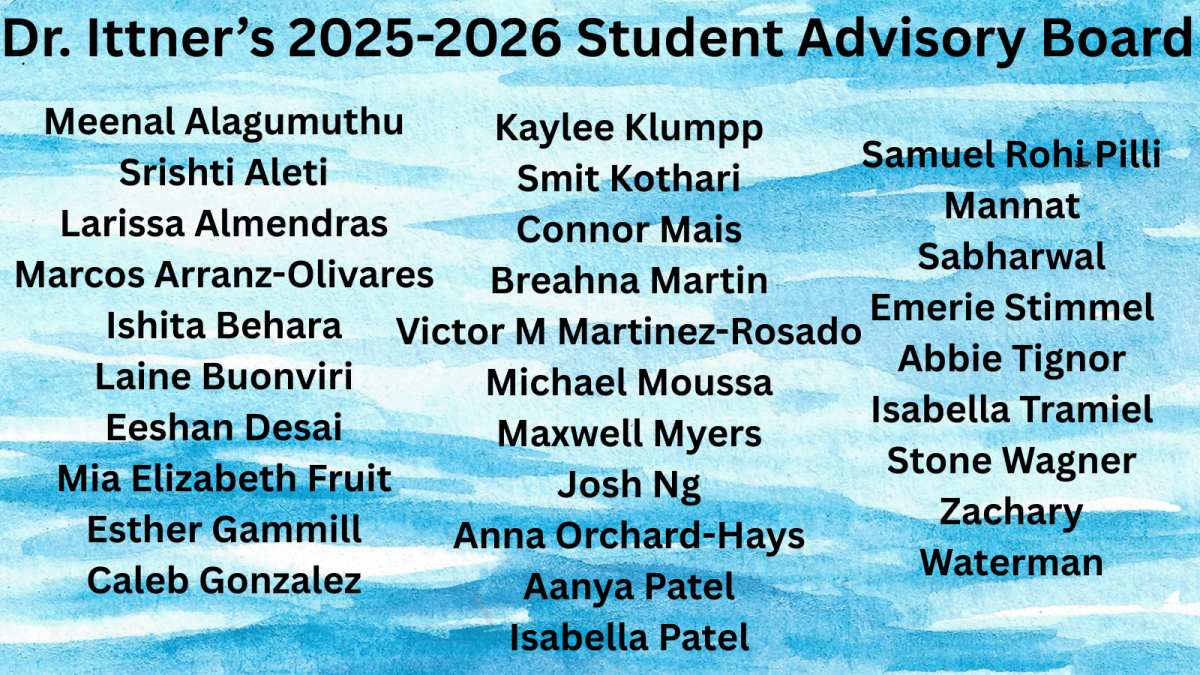Sweet and savory aromas float through the halls, opening new pathways for innovation and professionalism.
“Culinary class allows me to express creativity through hands-on experience with ingredients and techniques, allowing experimentation and innovation,” senior Justin Rayner said. “Learning the basics empowers you to add unique flavors and encourages thinking outside the box.”
Apart from individual expression, culinary fosters collaboration and improves soft skills.
“Introduction to Culinary Arts is important for building a culinary foundation, developing teamwork skills and building self-confidence in following a recipe,” culinary teacher Brooks Holuka said. “It is an entry-level course for students to explore culinary and food-related careers.”
Introduction to Culinary Arts covers 42 topics, some of which include professional organizations, kitchen measurements and math, cake decorating, baking basics, nutrition, international foods and more.
Students who understand the chemical and cellular connections can experiment with recipes, pairings, ingredient substitutions and plating, according to Holuka.
“I joined the class to cook dishes I wouldn’t make myself at home and try new recipes I haven’t seen before,” senior Maverick Johnson said.
Throughout the course, students have the opportunity to earn two certifications: the National Workplace Readiness Skills Certification and American Association Of Family And Consumer Sciences Pre-Professional Certification In Leadership Essentials.
These certifications provide opportunities for individuals to develop leadership knowledge and skill sets for life and career success, according to the American Association of Family and Consumer Sciences.
“I do not plan to use my culinary and cooking skills as a profession, but I do plan to continue learning new recipes and experimenting in my own kitchen,” Rayner said. “Basic knowledge from culinary will stick with me for the rest of my life, something I will be able to teach my kids one day.”












